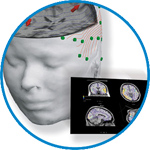- Home
- About ANT
-
Products

asa
asa is a highly flexible EEG/ERP and MEG analysis package with a variety of source reconstruction, signal analysis and MRI processing features.
.jpg)
eego mylab
The new frontier in multimodal brain research. With up to 16 kHz sampling rate, 256 EEG channels and unique software features, eego mylab gives you an unprecedented in-depth understanding of the human brain.

eego sports
eego sports offers complete freedom to collect high-density EEG data, bipolar EMG signals, and a variety of physiological sensor data, wherever and whenever required, with publish quality data in less than 15 minutes!

waveguard net
The waveguard net sets a new standard for research applications requiring high-density EEG data acquisition with quick preparation time, high flexibility, and subject comfort.

visor2
Our new and upgraded visor2 solutions integrate all the latest technologies for navigated rTMS, dual-coil navigation support, EEG-TMS recordings and pre-surgical evaluation for the highest quality in research and clinical procedures.

powerMAG ANT
The PowerMAG ANT 100 rTMS stimulator is designed for the specific needs of high-end TMS applications. Powerful high-frequency TMS as well as high precise single pulse and repetitive pulse protocols are combined in one single device.

xensor
xensor offers the solution for digitization of 3D electrode positions. xensor takes care of the whole procedure; it records, visualizes and stores positions acquired with a dedicated digitizer.

waveguard original
waveguard original is the cap solution for EEG measurements compatible with fMRI, MEG and TMS system. Use of active shielding guarantees performance in even the most demanding environments.

waveguard connect
waveguard connect EEG caps are a perfect match for hospitals and institutes aiming at reliable EEG, maximum uptime and great patient comfort! For optimal signal quality, the electrodes are made of pure, solid tin.

waveguard touch
waveguard touch is a dry electrode EEG cap. The unique Ag/AgCl coated soft polymer electrodes provide stable, research-grade EEG signals while maintaining subject comfort. The combination of these innovative dry electrodes and the industry-leading waveguard cap makes waveguard touch the best solution for dry EEG.

smartmove
smartmove allows planning of a complete TMS session ahead by defining stimulation sites based on anatomical MRI information and functional information like fMRI, PET or EEG/MEG.
Stay - References
- Support
- Events
- News
- Contact Us
You are here
Validation of soft multipin dry EEG electrodes
Validation of soft multipin dry EEG electrodes
Current developments towards multipin, dry electrodes in electroencephalography (EEG) are promising for applications in non-laboratory environments. Dry electrodes do not require the application of conductive gel, which mostly confines the use of gel EEG systems to the laboratory environment. The aim of this study is to validate soft, multipin, dry EEG electrodes by comparing their performance to conventional gel EEG electrodes. Fifteen healthy volunteers performed three tasks, with a 32-channel gel EEG system and a 32-channel dry EEG system: the 40 Hz Auditory Steady-State Response (ASSR), the checkerboard paradigm, and an eyes open/closed task. Within-subject analyses were performed to compare the signal quality in the time, frequency, and spatial domains. The results showed strong similarities between the two systems in the time and frequency domains, with strong correlations of the visual (ρ = 0.89) and auditory evoked potential (ρ = 0.81), and moderate to strong correlations for the alpha band during eye closure (ρ = 0.81–0.86) and the 40 Hz-ASSR power (ρ = 0.66–0.72), respectively. However, delta and theta band power was significantly increased, and the signal-to-noise ratio was significantly decreased for the dry EEG system. Topographical distributions were comparable for both systems. Moreover, the application time of the dry EEG system was significantly shorter (8 min). It can be concluded that the soft, multipin dry EEG system can be used in brain activity research with similar accuracy as conventional gel electrodes.

 Read more
Read more.jpg)




